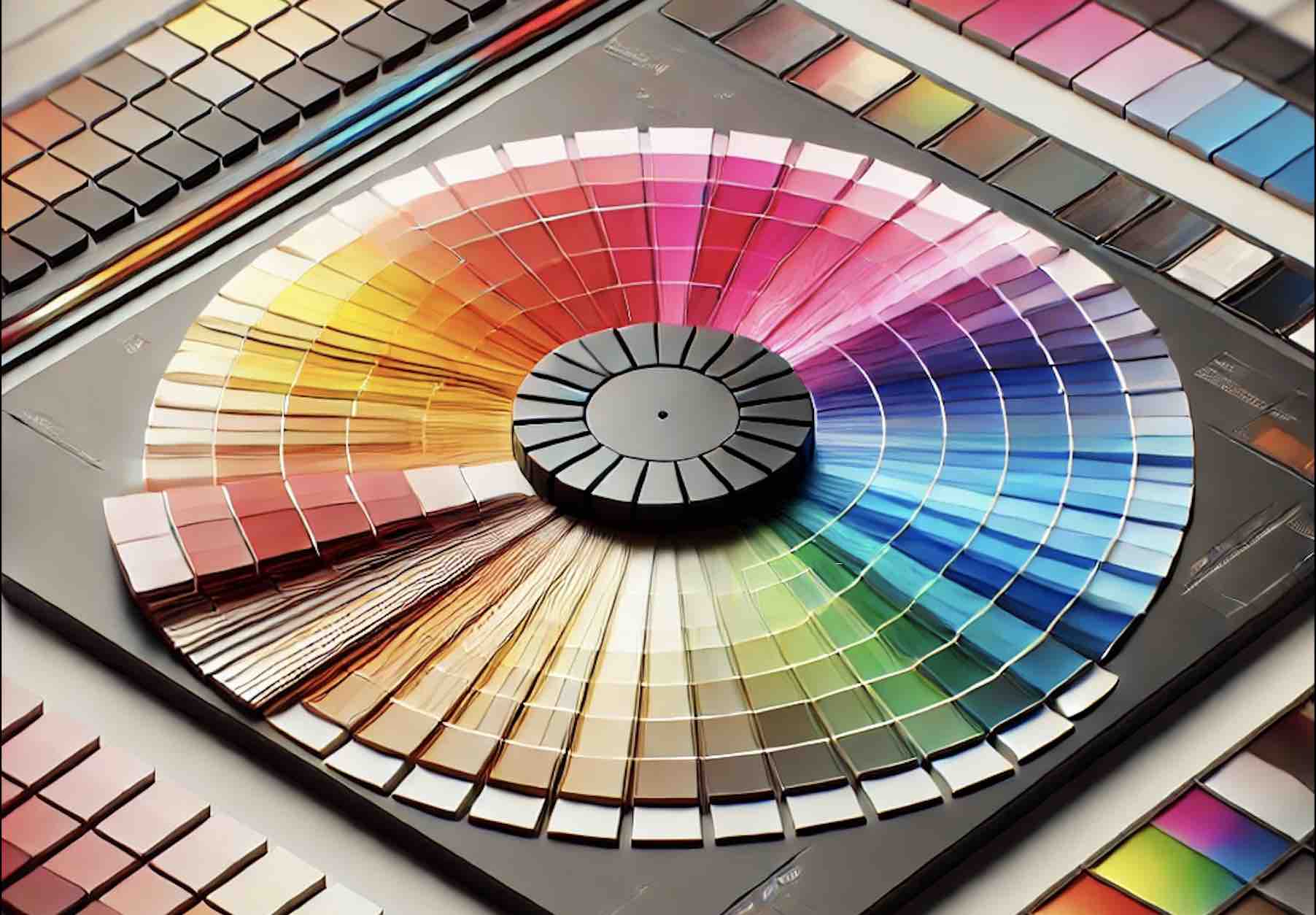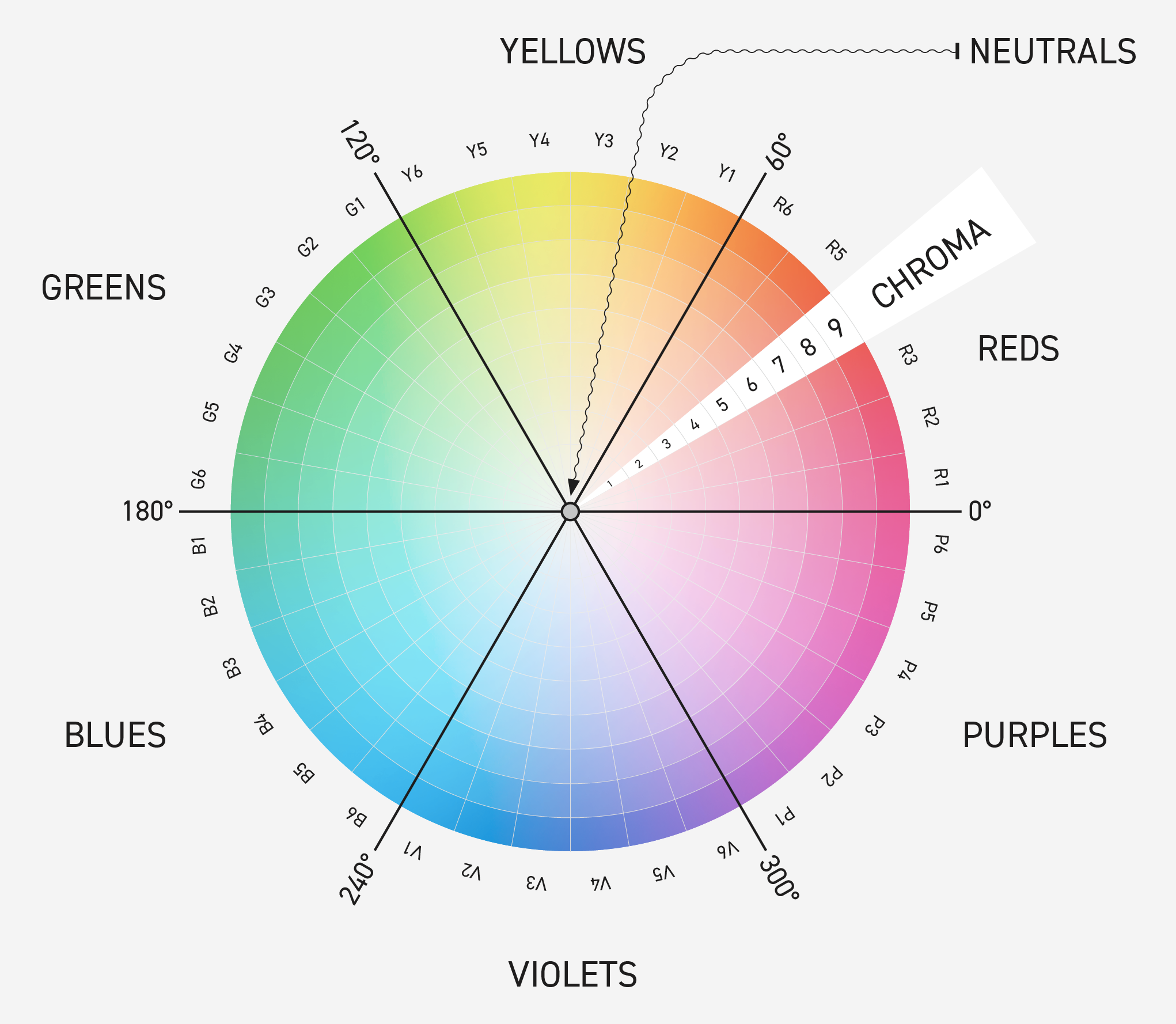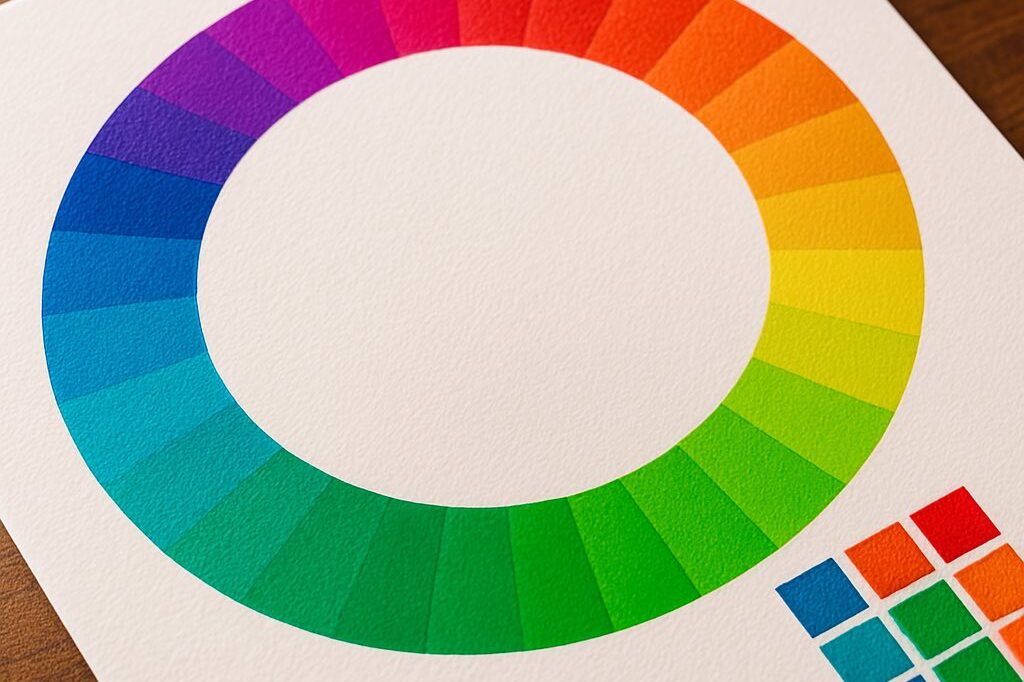A New/Better Spot Color Matching System
September 27, 2024 by Dan Gillespie

There is so much talk these days about spot colors, namely the PANTONE libraries. This “matching system” has been the defacto used by many industries, specifically printing. Recently PANTONE made the decision to remove the libraries from Adobe Creative Cloud applications and charge loyal customers a fee to access them. This has left many scrambling for what to do – and hopefully questioning the value – and wondering if there is an alternative…a better way.
Issues with the PANTONE model
First, let’s talk briefly about all the things that are not ideal or are problematic with this legacy model.
1. The ever-growing libraries of colors (ie: Solid Coated and Solid Uncoated Formula Guides) have been developed over decades, being originally derived from PANTONE inks. This has yielded a library that doesn’t cover the color spectrum evenly. As you can see here (image below), there are areas with a bunch of similar colors and other areas without any colors…

2. The visual references – swatches and fan guides – were/are not accurate, even when brand new, and are generally causing problems not solving them. They are meant to be used as inspiration – not communication. Plus, the need for a physical visual reference breaks an otherwise fully digital process.
3. The master definitions of each color – which are spectral – are not distributed, only accessible from their PANTONE Live /Connect Cloud. Only Lab value libraries are distributed.
4. These LAB values are different for each measurement mode (M0, M1, M2, M3) as well as illuminant and observer angle. For instance, the libraries that have come with Adobe Creative Cloud applications and the values available in the current Pantone Connect platform are M2 Lab values for D50/2º. M2 values are UV excluded. Daylight has UV. Why do you want the UV excluded values? Answer is – you probably don’t but that’s all ya get.
What is the alternative?
I could go on (and on) but let’s get to the point. Is there a better way? What are the alternatives? What should we be doing to define and communicate spot colors?
1. We need the spectral definitions – we can’t continue to use named colors with variable target values and we can’t accurately print spot color tints and overprints without them. And we need those spectral definitions to be embedded in our artwork and utilized through the process. The spectral definition can be embedded into the PDF artwork. It can then be accessed through the PDF. An ink lab technician could use this definition to formulate the ink. A prepress person could use this to proof the color – on a monitor or printer. A pressroom person could use this to compare to when QC’ing the color – and then they can share that conformance data back to the designer/brand/print buyer/client, to prove how accurately they reproduced it.
2. We need to get away from physical visual references – at least the ones that have been available to us. The swatches and fan guides printed now are only available for certain printing processes on specific substrates. We should be utilizing the digital definition and proving we can view it properly on a monitor or reproduce it in print. And if we do need physical visual reference, we have it output on the specific printing machine on the specific substrate the final product(s) will be produced using. You can even predict an entire library of in-gamut colors using the ICC profile of the printer – and save that library as an Adobe Swatch Exchange (ASE) or Adobe Color Book (ACB) format, for use in Creative Cloud.
3. We need for software developers to get busy implementing this stuff. The entire industry is moving the direction I’m describing. There are ISO standards for defining/saving spectral spot colors (CxF/X – ISO 17972-4:2018) and for embedding the CxF in a PDF (PDF/X-6 ISO 15930-9:2020). And, Adobe’s new version of the Adobe PDF Print Engine (APPE) v6 (which is licensed by all Adobe RIP software companies) has the functionality needed to interpret spectral definitions built-in. (Check out my other blog post and the official Adobe website for more on APPEv6.) The customers need to pressure the developers to implement this functionality.
4. And we really need a master spectral color library. One that has colors uniformly throughout the entire spectrum. One that is all defined in CxF format, so it’s open architecture and non-proprietary. One that is… FREE!
Let me introduce you to ChromaSpot – the Spot Color library we’ve all been waiting for! This is brand new and not even officially released yet but coming very soon. This new color library has lots of color science and modern architecture, click the link and read for yourself from the official ChromaSpot landing page. 3,360 spectral color definitions with no colors too close (>1.5 ∆E 2000) or too far (< 4.5∆E) from one another.
- ChromaSpot is a universal color library designed to be an alternative to existing solutions.
- Basic access to the library is free of charge — today and in the future.
- ChromaSpot is compliant with key ISO and industry standards.
- ChromaSpot is an independent project that was developed as an international initiative by color specialists.
- The ChromaSpot commission is managed by Chromasync Company, Poland.
- The ChromaChecker Corporation joined the project and is offering all users a basic free version within CC Capture.

- ChromaSpot is an open database – new color samples can be introduced in the future.
- ChromaSpot offers a human-understandable naming system and actual color names, which make color communication easier, more effective, and more accurate.
- Users can propose new colors after commission approval is registered, and extended names will be published.
- ChromaSpot API will be published (preliminary accessible to the initiative group only) – any software/hardware manufacturer (RIPs, Color Servers, and more) will be able to synchronize with the central repository.
- New candidates that want to join the initiative group have to commit to allowing users to access the library free of charge.
Conclusion
In my opinion, you’re looking at the wave of the future. This is how things will be done and the time is now to start doing it this way – or working towards doing it this way.
Please feel free to reach out to me with questions or help in implementing this revolutionary new process:
dang@aldertech.com
+1 (717) 475 9007
Tell us what you think!
Read more articles
The Most Important Checkbox in your RIP Color Management Settings
If you’re serious about color accuracy in your printshop, you’ve likely explored output profiles for your large format printers….
The Future of Large-Format Printing: AI, Sustainability, and Remote Innovation
This article was previously published on printvergence.com At HP we are already looking to the year ahead and all…
What are the complications of ICC RGB profiles?
As content creators, whether you’re a photographer, graphic designer, or digital artist, understanding the role of ICC RGB colour...




